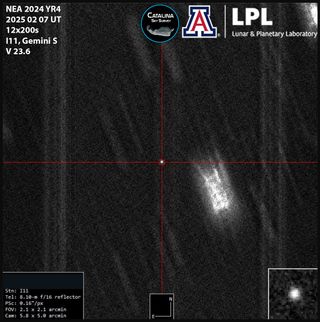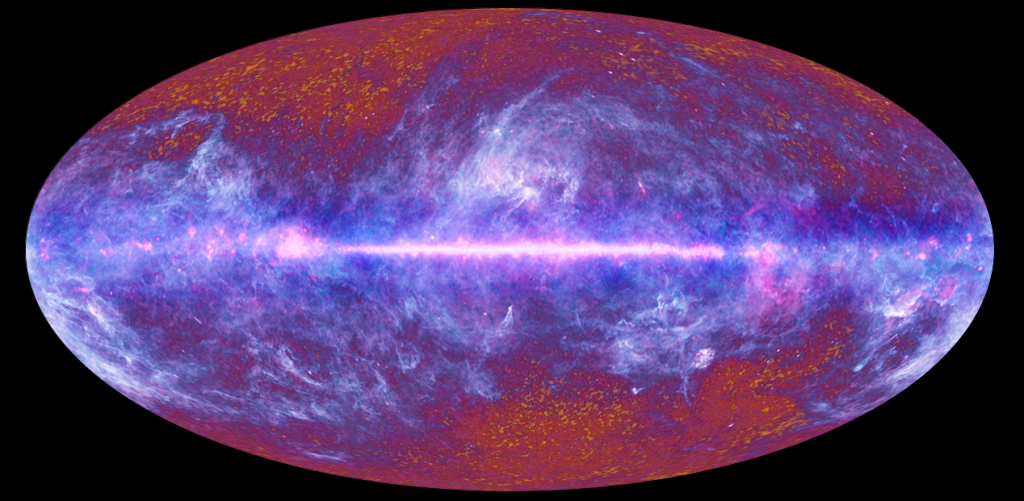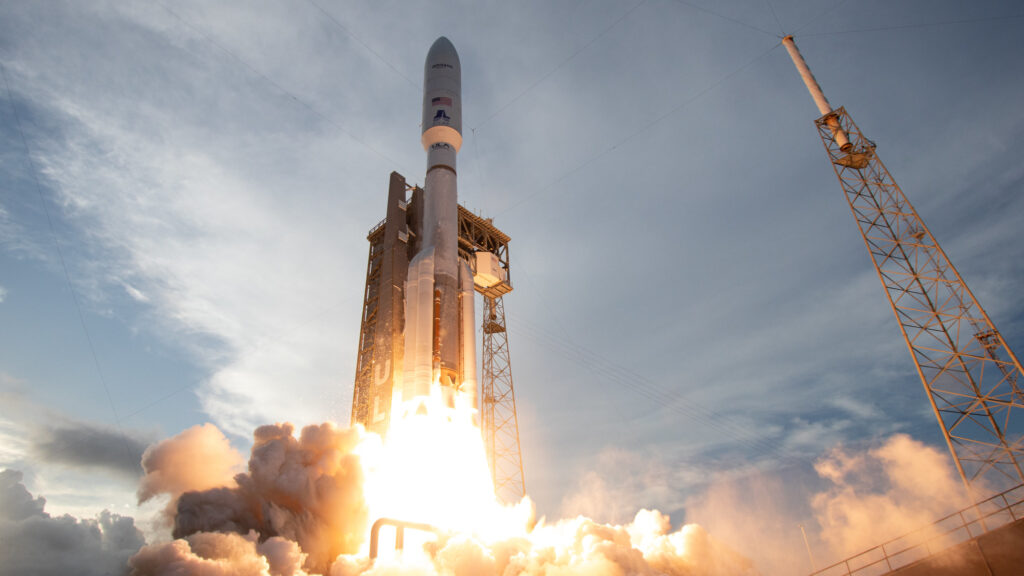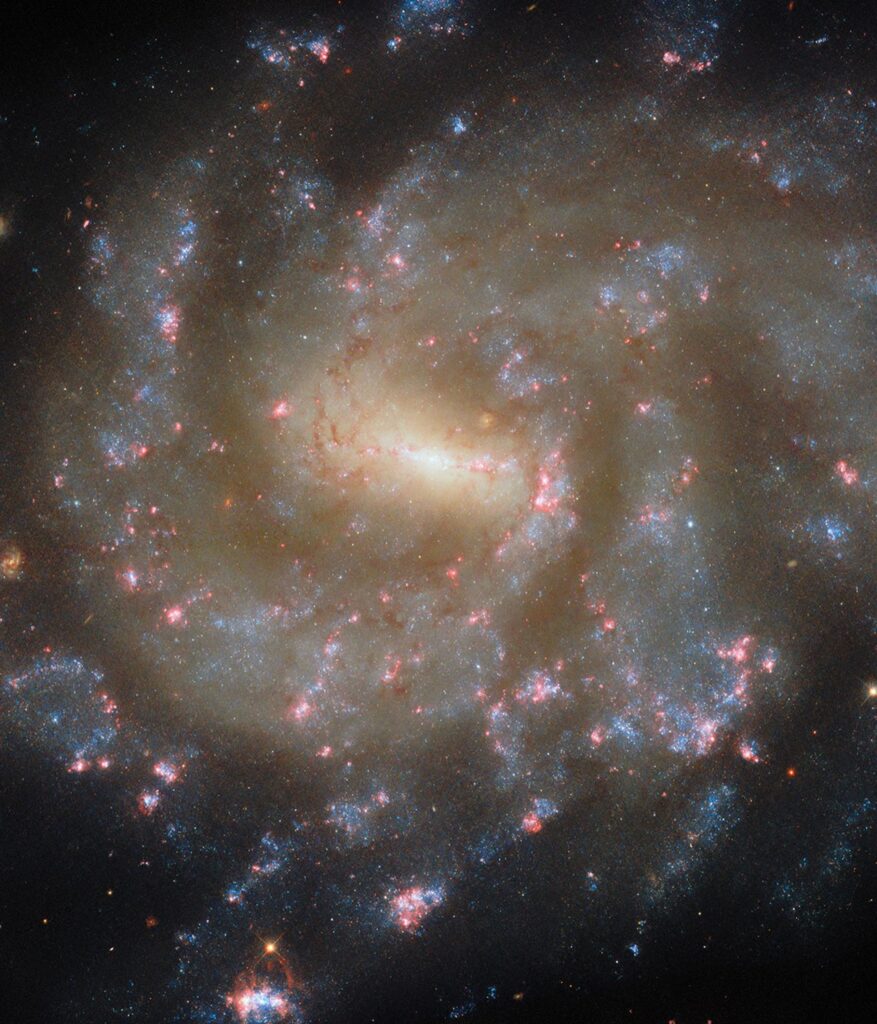It might not look like much in this image, but this is the asteroid that has made a major news impact in 2025. That’s because this space rock, designated asteroid 2024 YR4, has a 1-in-48 chance of impacting Earth in 2032.
For obvious reasons, astronomers are desperate to learn as much as they can about 2024 YR4, estimated to be as large as 177 feet wide (54 meters wide). That’s around as wide as Cinderella’s Castle in Walt Disney World Florida is tall.
The image featured here was captured on Feb. 7, 2025 by the 8.1-meter Gemini South telescope that’s located on Cerro Pachón, a mountain in the Chilean Andes. At the time the image was taken, the asteroid was around 37 million miles (59.5 million kilometers) from Earth and 130 million miles (209 million kilometers) from the sun.
“I find 2024 YT4 to be extremely exciting!” Bryce Bolin, the NASA Goddard Space Flight Center astronomer who helped capture this image, told Space.com. “Not only because of its notoriety but for the scientific potential of studying such a small asteroid in high detail.
“Only a few asteroids have been studied like this.”
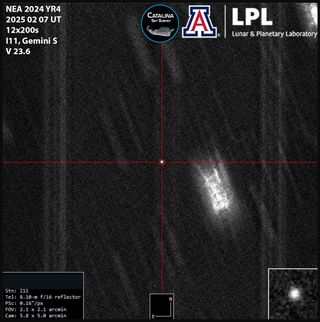
“We took 12 200-second long exposures in the Red band and tracked the motion of the asteroid to obtain these images,” Bolin explained. “The observations were difficult for three reasons. Firstly, the asteroid was faint, requiring the use of large telescopes to observe.”
Bolin explained the second difficulty surrounded the fact that 2024 YR4 was observed when the moon was 70% illuminated, meaning there was a considerable increase in sky background light compared to typical darker conditions. This made it more challenging to detect such a faint and distant object.
You may like
Finally, Bolin added that the asteroid was moving 0.26 arcseconds per minute, which necessitated careful tracking with Gemini South to avoid trailing losses.
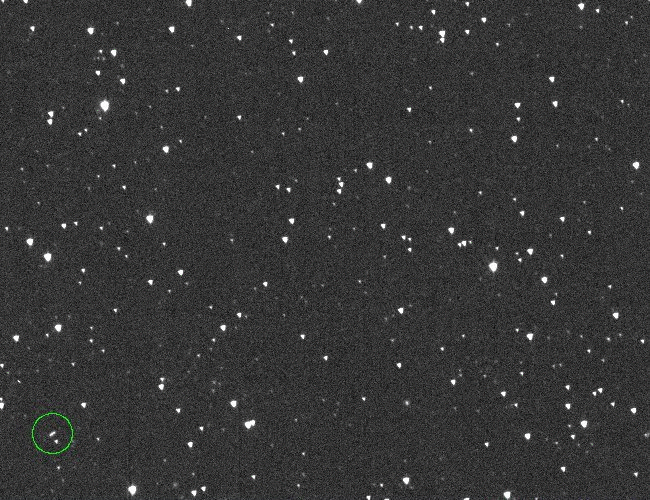
This isn’t the first image of asteroid 2024 YT4. The asteroid was first discovered by the NASA-funded Asteroid Terrestrial-impact Last Alert System (ATLAS) on Dec. 27, 2024.
Soon after its discovery, the asteroid raced to the top of NASA’s Center for Near Earth Objects Studies (CNEOS) Sentry impact risk table. The asteroid has remained there ever since, with the odds of impact in seven years climbing.
Asteroid hunter David Rankin has been tracking 2024 YT4 since its discovery. He recently reassured Space.com’s readers by explaining that the increase in impact odds was expected. Rankin added that those odds are also expected to drop soon when the orbit of this asteroid is better understood.
Related Stories:
There are more Gemini South images of 2024 YT4 in the pipeline, but as the asteroid is currently heading away from Earth, it might be a while until we get a really good look at this space rock — from the ground at least.
Bolin explained that 2024 YT4 will appear to fade until around mid-March, making it rather difficult to detect from the ground. The asteroid will become visible to ground telescopes in mid-2028 as it reapproaches Earth.
“Therefore, this is the last chance we have to observe the asteroid from Gemini before 2028,” Bolin concluded.
Space-based telescopes may have a little more fortune tracking this space rock until then. The James Webb Space Telescope (JWST) is set to join this quest in March of this year.
